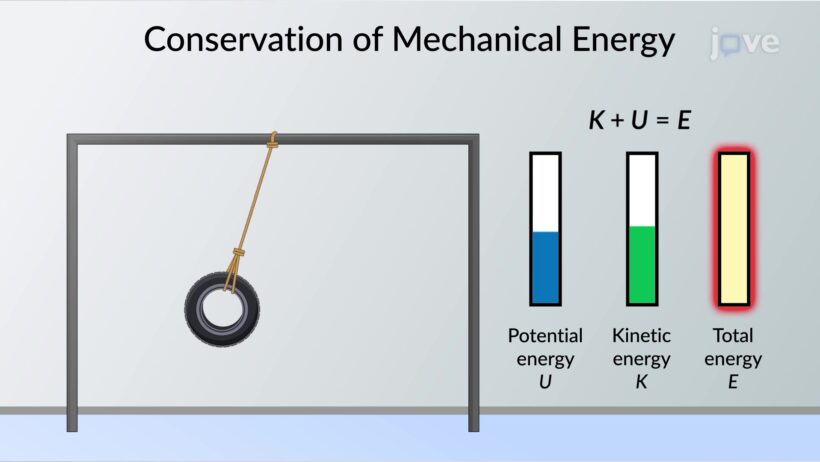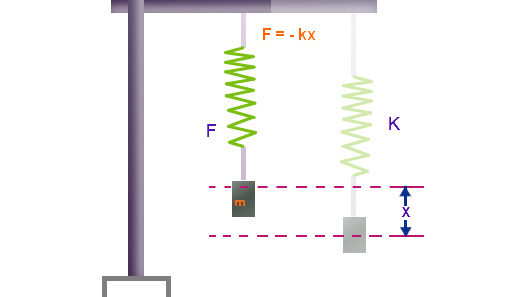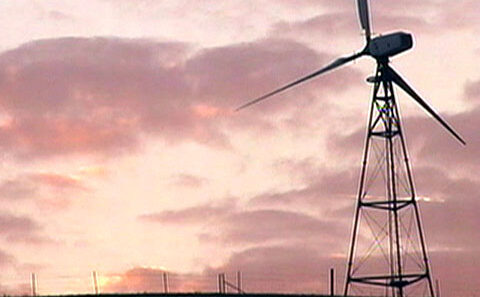In an era where the degradation of our environment looms large over humanity, conserving mechanical energy emerges as an essential, yet oft-overlooked, avenue toward sustainable living. As we delve into the realm of mechanical energy—the energy possessed by an object due to its motion or position—we can uncover innovative ways to harness and conserve this vital resource. Embracing this knowledge not only fosters ecological stewardship but also engenders a profound shift in how we perceive energy consumption in our daily lives.
Mechanical energy can be broadly categorized into kinetic and potential energy. Kinetic energy is the energy of motion, attributed to objects that are in dynamic states—think of a rolling ball or a speeding vehicle. Potential energy, conversely, is stored energy, found in objects that are elevated or have the capacity to move due to their position—like water held at the top of a dam or a stretched rubber band. Understanding these forms of energy sets the foundation for strategies aimed at their conservation.
One pivotal strategy for conserving mechanical energy lies in the improvement of transport systems. The adoption of energy-efficient vehicles significantly mitigates energy wastage. Innovations in hybrid and electric vehicle technologies can lead to reduced fuel consumption and lower carbon emissions. In addition to individual choices, systemic transformations in public transport—such as optimized routing and the integration of renewable energy sources—can vastly improve energy efficiency. A notable example of this is the implementation of regenerative braking systems in trains and electric vehicles. These systems recover kinetic energy during deceleration and repurpose it, thereby enhancing overall energy efficiency.
Moreover, designing urban spaces with energy conservation in mind facilitates the maximization of mechanical energy conservation at a community level. Integrated cycling and pedestrian pathways lure more commuters away from cars, thus reducing potential energy lost in traffic congestion. Buildings designed with energy-efficient materials can incorporate features such as wind turbines and solar panels, generating energy while also reducing reliance on fossil fuels. The architectural orientation of these structures can capitalize on natural light and airflow, reducing the need for mechanical heating and cooling systems that consume substantial energy.
In industrial settings, the conservation of mechanical energy can yield enormous benefits. Through the implementation of advanced manufacturing techniques and the optimization of machinery, industries can minimize waste. Techniques such as ’energy auditing’ allow for the identification of inefficiencies within systems; subsequently, engineers can redesign processes to conserve energy. Facilities that harness mechanical energy through the use of integrated energy storage systems can store energy when demand is low and release it during peak usage periods, which is instrumental in balancing energy loads and maximizing efficiency.
Homeowners can play a significant role in the conservation of mechanical energy by adopting renewable energy solutions. Installing solar panels, for example, can convert sunlight into electricity, thereby supplementing mechanical processes that traditionally rely on non-renewable energy sources. Employing smart home technology can present a paradigm shift in energy consumption; smart thermostats and energy-efficient appliances are more adept at optimizing energy use and can dramatically reduce waste. Furthermore, proper insulation can enhance the efficiency of heating and cooling systems, conserving potential energy that would otherwise necessitate higher consumption levels to maintain comfortable living conditions.
Another intriguing approach to conserving mechanical energy is through the practice of energy recycling. It is crucial to recognize that energy is not merely consumed; it can also be reclaimed. For instance, capturing energy generated from activities such as gym workouts—using exercise equipment that converts kinetic energy into electricity—represents a unique merging of fitness and sustainability. Such initiatives raise awareness of energy dynamics in our daily routines and wield the potential to shape habits that emphasize recycling and conservation.
Education and advocacy play a critical role in promoting mechanical energy conservation. Schools and organizations can implement programs that engage students and community members alike. Workshops focused on energy conservation measures can instill an awareness of practical strategies individuals can employ to make a difference. Further, policy initiatives aimed at incentivizing energy-saving measures in both residential and industrial sectors can facilitate widespread adoption of energy-efficient technologies.
The relationship between society, technology, and energy conservation is complex and constantly evolving. By prioritizing the conservation of mechanical energy, we are not only addressing immediate environmental concerns but paving the way for a more sustainable future. Adopting an anticipatory mindset that emphasizes energy efficiency imbues our actions with purpose—even the small, seemingly inconsequential choices matter. Choosing to walk or bike instead of driving, investing in modern insulation, and advocating for renewable energy all contribute to a tapestry of collective effort against climate change.
As we embark on this journey toward a sustainable society, let us remain steadfast in our commitment to conserving mechanical energy. This conscious effort will not only ensure the efficient use of resources but also foster a harmonious synergy between humanity and the planet. Together, the shifts in perspective and actions taken today can result in a ripple of positive effects for generations to come. Thus, as we move forward, let each act of conservation be a deliberate motion that matters, underscoring our responsibility to the Earth.







